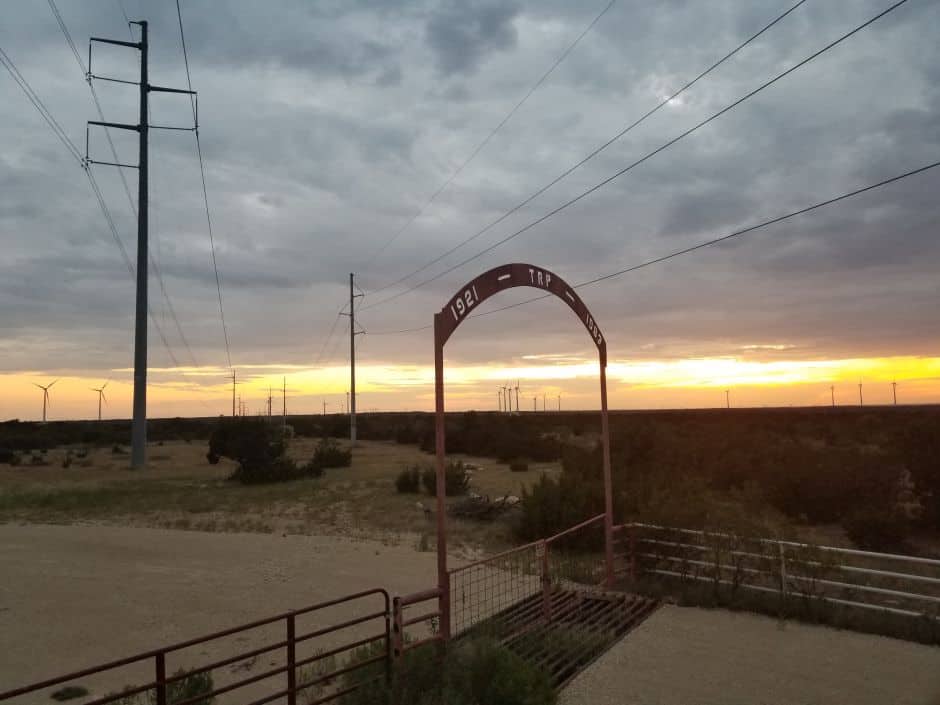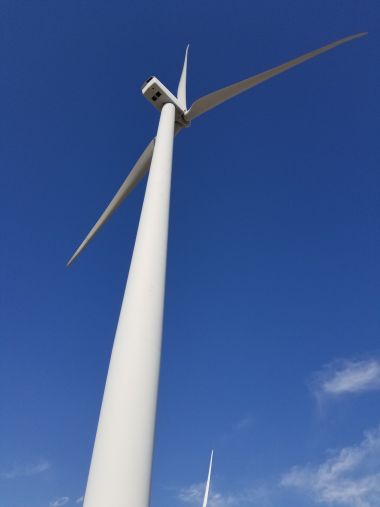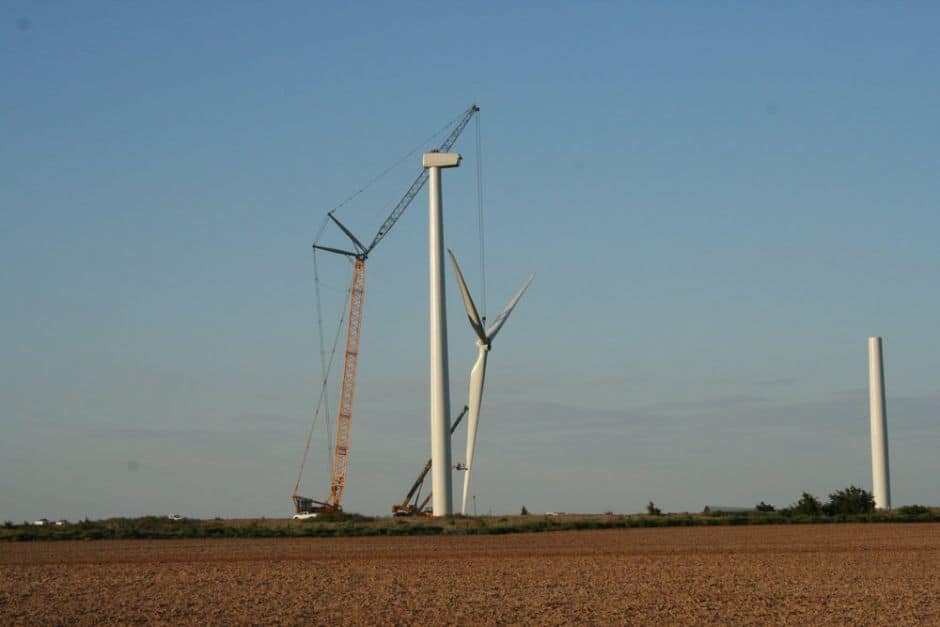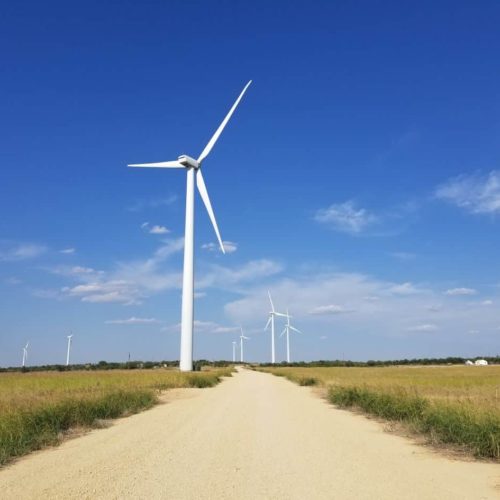This story was co-published by Mother Jones.
Introduction
SWEETWATER, Texas — Rory Barnes used to rush home from work each evening to sit on his front porch and watch the sun set over the copper canyons of the Brazos River Valley.
But after 13 years of living in his dream home in central Texas, Barnes decided to move when he learned his neighbors had agreed to have several giant, white metal turbines installed on the edge of his property line, decreasing the value of his land and ruining his picture-perfect view.
“I have more respect for my neighbors and the natural beauty of the land than any money I’ll ever get from wind energy,” said Barnes, who has worked for more than two decades helping preserve the rolling plains and wildlife of Texas as a land manager for ranches.
“I’ve seen this time and time again,” he added. “They find the person who is willing to whore out their land, and the tumor starts, and the cancer spreads from there, and it covers the entire landscape.”
About 2,200 wind turbines were built in Texas in 2017, more than ever before, as wind industry companies try to snag billions of dollars in federal tax subsidies before they expire at the end of 2019. This has set off a wind rush nationwide, but it’s also set up a fight at the state level to regulate this overlooked industry without clipping its wings.
The rush is forcing state officials across the country to question if energy consumers are footing the bill without getting enough benefit from the projects — and to ask what happens to the more than 57,000 wind turbines nationwide after they stop producing energy?
Nowhere is this fight and uncertainty more palpable than in Texas, the wild west of wind energy and the home of the nation’s wind energy capital, Sweetwater, where the surrounding county boasts one wind turbine for every 12 residents.

Wind Rush
At sunset, outside one of Sweetwater’s largest wind farms, the crackling of the electricity from the transmission lines overhead that deliver energy as far as Dallas and Austin some 200 miles away adds an eerie tune to the brushland melody of chirping crickets and cicada songs.
The sky darkens and hundreds of red blinking lights, atop each 300-foot wind turbine, begin to appear in all directions, as far as the eye can see.
Larissa Place, assistant director of Sweetwater’s economic development office, calls it “the red-light district.”
Place is responsible for attracting manufacturers and new wind energy-related business to the Texas city of fewer than 11,000 people. But she is also land manager Barnes’ girlfriend.
“I’m between a rock and a hard place,” she said. “My job is to promote wind farms and wind energy, and I do that because it’s good for the environment and creates jobs. But at the same time we’ve lost the ranch that we loved because of it.”
She and Barnes just wanted a place to get away and enjoy the beauty of the rolling plains and canyons of Texas’ hill country, but instead the area surrounding the 3,000-acre ranch they called home was being turned into what she called an industrial complex.
More than 1,300 wind turbines dot the hills of surrounding Nolan County. Those turbines have helped the local tax valuation rise from about $500 million in 1999, when they first started sprouting atop the desert mesas and failing cotton fields, to more than $3 billion in 2017, according to County Judge Whitley May, who heads the Commissioners Court that governs the county and is responsible for approving wind farms locally.
“We were struggling, especially the farmers,” said May, himself a former construction superintendent who helped build wind farms all over the U.S. in the early 2000s.
Now more than 250 families in the Sweetwater area make a living from wind farms, according to the city’s development office.
In 2017, annual turbine land lease payments to Texas landowners added up to nearly $60 million and the capital investment by wind energy companies totaled $42 billion, according to the American Wind Energy Association, the national trade group for the industry.
But not everyone in Texas is a big fan of wind energy. Democratic state Sen. Juan “Chuy” Hinojosa said he’s for renewable energy if it can stand on its own.
“There is a good side to this: It’s clean energy,” Hinojosa added. “But you can’t subsidize it forever, and you have to have proper oversight to regulate them and determine where to build them.”
Last year, Hinojosa sponsored a bill that eliminates state tax incentives for new wind farms built within a 25-nautical-mile buffer zone around military aviation bases. The measure passed and is currently the state’s first successful attempt at regulating the wind industry since the tax incentives were first adopted in 1999, according to Hinojosa, who’s wary of the recent rush to build wind farms.
“They are building these wind farms to get the tax credit,” Hinojosa said. “They are not sustainable without the subsidies.”

Subsidizing Wind
Wind farm operators nationwide received nearly $37 billion in federal, state and local subsidies from 2000 through 2017, according to data from Good Jobs First, a nonprofit nonpartisan research center that promotes corporate and government accountability in economic development.
But federal subsidies make up the bulk of support. Since 2000 when the nonprofit began tallying the credits, federal subsidies have made up about 70 percent of all grants, including state and local programs. In the most recent fiscal year alone, federal subsidies totaled $1.5 billion, according to its data.
The Production Tax Credit is the primary federal subsidy, which pays wind farm operators for every megawatt-hour of renewable energy they produce in their first 10 years on top of what they are paid from consumers. Initially established in 1994, the PTC provides an inflation-adjusted credit that stood at $24 per MWh in 2017, according to the latest Department of Energy market report.
By comparison, Texas paid wind operators about 55 cents per megawatt-hour under its state incentives.
But the federal program is set to expire Dec. 31, 2019, and few expect it to be renewed in the current political climate.
“Who knows what a future Congress will do, but the current one is not likely to renew any type of credits,” said Gürcan Gülen, a senior energy economist and research scientist at the University of Texas at Austin’s Bureau of Economic Geology.
And President Donald Trump has made clear his preference, both on the campaign trail and now in office. During a rally in West Virginia on Aug. 21, Trump told nearly 9,000 cheering supporters: “In times of war, in time of conflict, you can blow up those windmills. They fall down real quick. … But you know what you can’t hurt? Coal.”
“In times of war, in time of conflict, you can blow up those windmills. They fall down real quick. … But you know what you can’t hurt? Coal.”
Donald Trump at an August 2018 rally
Politics have always been a key factor in the boom-and-bust of the wind industry, according to Gülen. He expects the same to happen this time around.
The PTC has expired four times in the past decade. Every time it has lapsed or been scheduled to expire, there have been peaks in production followed by significant lulls.
“Historically, the PTC has been a very effective mechanism in driving a lot of wind energy across the country, but it hasn’t been the only mechanism,” said John Hensley, senior director of research and analytics at AWEA. “States have also been helpful in driving wind energy forward.”
Wind Mandates
Today, at least 38 states, including Texas, have renewable energy standards that both help set minimum requirements for the amount of energy produced and financially support the industry. At least a dozen of them have increased their alternative energy production goals since 2015. And Vermont, Oregon, California, New York and Hawaii have committed to having more than 50 percent of their energy come from wind, solar and other forms of green energy by 2045 at the latest.
While Texas set a lower goal of about 10 percent, wind operators here also benefit from more than just state subsidies and the patchwork of local and even school district-based incentives. Taxpayers paid $7 billion in the early 2000s to build transmissions lines that connect privately owned wind farms across Texas’ midwestern wind corridor to the state-owned electric grid after a 2005 bill established Competitive Renewable Energy Zones.
Texas also has one of the only free energy markets in the world, which allows the nonprofit Energy Reliability Council of Texas to pick and choose where to purchase energy depending on which form is available and cheapest at different times of the day. This has put wind energy on par with fossil fuels in the state and has even made it cheaper than natural gas when the wind is blowing vigorously.
Unfortunately for Texas energy consumers, though, the wind is fickle. According to ERCOT, it is least productive in the afternoon hours of summer — peak demand time.
In the past 20 years, Texas has added more than 23,000 megawatts of wind energy capacity, enough to power in excess of 6 million homes — or nearly two out of every three households. But analysis of wind turbine data from the U.S. Energy Information Administration shows turbines in the state have been operating on average only between 30 and 40 percent of their capacity and are most productive at night when demand drops.
Still, new wind turbines can be twice as tall, have a longer lifespan and be more efficient than older turbines, according to Robert Peña, an energy consultant and wind industry veteran who worked at some of Texas’ first wind farms.
In South Texas, such 500-foot turbines can catch even the “day winds” and produce nearly three times as much electricity compared with turbines built a decade ago, Peña said. And the renewable energy industry is working on batteries that can store the energy to be used when it’s needed, not just immediately as it is produced.
“That’s why it’s important for companies to continue investing and the government to continue subsidizing wind,” Peña said.
Regulating Wind
Amid the wind rush during the past three years, 31 of the 40 states with commercial wind farms have updated or created regulatory policies through statutes, zoning ordinances or other form of governance, according to North Carolina State University’s Database of State Incentives for Renewables & Efficiency.
In 2015, Virginia, Oklahoma and Connecticut were some of the few states that had regulations addressing decommissioning, the removal of obsolete turbines and restoration of the land. Since then, at least five more states — New York, Ohio, Wisconsin, North Carolina and Maine — have added language to their policies addressing decommissioning.
But Texas has virtually no rules of any kind, making it an unregulated haven that attracts even more growth from the wind industry here. That worries some who fear what today’s rush will mean for the future.
A wind turbine has a lifespan of about 20 years. A 2016 study published in Texas Law Review estimates more than 29,000 wind turbines in the state will have gone out of commission between 2017 and 2030 at an average cost of more than $25,000 to tear them down and restore the land.
The study looks at the first wind rush during the early 1980s that took place in California, where an estimated 4,500 inactive wind turbines remain standing. The study, titled “Wind Energy’s Dirty Word: Decommissioning,” also compares the wind industry in Texas to the boom-and-bust cycle of the oil industry that left thousands of abandoned, dried-up oil wells.
Using the ratio of 6.9 percent of oil wells in Texas that were abandoned, the report estimates 3,600 turbines could remain standing if the regulatory vacuum continues, leaving taxpayers with the cleanup bill like they now face with the oil wells.
Tyler Fayles, a bartender by night and English teacher by day, feared that fate for the wind farm that was built on his own family’s property in 2001. When he was approached by the new owners of the wind turbines recently, he used the opportunity to update the original contract to include a decommissioning fund that forces the company to set money aside to ensure his land is restored once the wind turbines stop producing energy — or if the operator goes bankrupt.
“My grandfather was one of the first ones to sign up with the wind farms, so he didn’t really have anyone to ask for help or to use as a reference for how much they should be paying him or what should be included in the contract,” Fayles said. “This time, I got a lawyer and he helped make sure we weren’t getting shortchanged and that we were protected in case anything happened.”
Democratic state Rep. Terry Canales wants to go beyond the need for such individual deals. In February 2017, Canales, who sits on the House Energy Resources Committee, introduced a bill that would task the state with ensuring the decommission of the more than 10,000 wind turbines operating statewide in case the industry flatlines.
Canales’ bill also aimed at making the contracts between wind farm operators and landowners more transparent so everyone could know how much their neighbor is getting paid for the energy being produced by the wind turbines on their land.
“Currently in Texas, there is little to no regulation with respect to wind energy,” Canales said. “The spectrum that lies unregulated ranges from land owner’s rights to state control over entire windmill fields.”
The bill passed the Energy Resource Committee but died before making it to the House floor.

The Future of Wind
A proposed project called Wind Catcher Energy Connection was slated to be the largest wind farm in the U.S., with power lines stretching across Oklahoma, Arkansas, Louisiana and Texas.
But Texas Industrial Energy Consumers, a group representing the state’s largest power consumers such as chemical and steel plants, argued in a brief to Texas officials that the wind farm would have been built at the expense of taxpayers because of federal policy changes under President Donald Trump.
In July, just weeks before construction was scheduled to start, the Public Utility Commission of Texas shot down the $4.5 billion project, arguing it would not have benefited customers.
Lawmakers and state officials in Texas are not the only ones looking more closely at the industry than ever before, and the current political climate seems to be signaling that the prevailing winds may be shifting.
Down Broadway Avenue, past the feed stores and the Mustang Donut shop named after the high school’s mascot, a mix of boarded-up convenience stores sit alongside new boutiques, restaurants and warehouses. Most of the new shiny metal buildings are storefronts and local offices for businesses that service the wind industry.
Across the street from the donut shop, in one of the older buildings that predates the rush, Russ Petty makes fliers, signs and other print products at his shop, Creative Graphic Solutions. He’s weathered the lulls that have struck Sweetwater in the past, and today business is good. Many of his customers are part of the wind industry.
On the land he owns out in the county, where he grows cotton and raises cattle, he’s dealt with abandoned oil wells, but he’s also been pleased to see the recent repowering of wind turbines on his property as the industry reinvests in the area.
“I guess a lot of us are so optimistic that this will continue,” Petty said. “But realistically that’s not going to be the case. Is it 10 years from now? Is it 50 years from now? Nobody knows.”
Read more in Money and Democracy
Money and Democracy
Supreme Court punts on partisan gerrymandering, sets up fight in the states
State courts, state legislatures and voter ballot initiatives are primed to become the main battlegrounds for partisan map drawing, as federal courts remove themselves from the debate.


Join the conversation
Show Comments